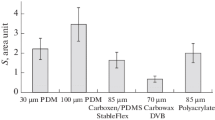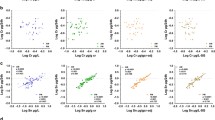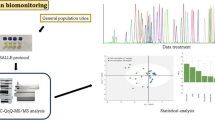Abstract
Objectives: The biomonitoring of carbon disulphide exposure is currently performed by measuring the concentration of 2-thiothiazolidine-4-carboxylic acid (TTCA) in the urine of exposed workers. Methods: In this study the effect of TTCA, which is found in some vegetables, on the biomonitoring of low-level carbon disulphide exposure was evaluated. In addition the upper reference limit (URL) of TTCA in the non-exposed Finnish population was estimated by analysing TTCA in urine samples from 116 people. The samples were collected at health centres all over Finland from people in employment and in the age group 24–64 years. The analytical measurements were made using a modern column-switching technique and the results were compared with those from the same samples using the extraction method generally in use and, until now, recommended for the determination of TTCA in urine. Results: The results obtained with the two analytical methods correlated very well with each other (r=0.9). The liquid-liquid extraction method gave results constantly about 3.5 μmol/l higher than the column-switching method. The results of this study also confirmed that many cruciferous vegetables (Cruciferae) contain endogenous TTCA (0.6–5.0 mg/kg), which is excreted unchanged in the urine. After a normal meal which included these vegetables, the TTCA concentration did not rise above the biomonitoring action level even if this was as low as 2 mmol/mol creatinine, but was easily above the URL of TTCA in the non-exposed population. The URL, calculated as the 95th percentile, was 0.3 mmol/mol creatinine. Conclusion: The results showed that the extraction method was not sufficiently specific or sensitive when the TTCA concentrations were lower than 10 μmol/l. In contrast, the column-switching method seemed to give reliable results even at these low levels, which are the levels of interest in current practice.
Similar content being viewed by others
Author information
Authors and Affiliations
Additional information
Received: 29 September 1999 / Accepted: 27 December 1999
Rights and permissions
About this article
Cite this article
Kivistö, H. TTCA measurements in biomonitoring of low-level exposure to carbon disulphide. Int Arch Occup Environ Health 73, 263–269 (2000). https://doi.org/10.1007/s004200050426
Issue Date:
DOI: https://doi.org/10.1007/s004200050426




